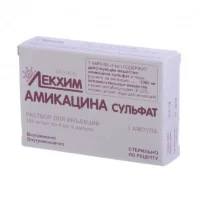Description
Aurotaz (piperacillin) Powder for Solution for Injections 4.5 g. №1 Vial
Composition
Active Ingredient: Piperacillin sodium. Inactive ingredients may include sodium carbonate, sodium citrate, and hydrochloric acid.
Mechanism of Action
Piperacillin, a broad-spectrum antibiotic, inhibits the synthesis of bacterial cell walls, leading to bacterial cell death. It also exhibits synergistic effects when combined with beta-lactamase inhibitors, enhancing its antibacterial activity.
Pharmacological Properties
Aurotaz is effective against a wide range of gram-positive and gram-negative bacteria, making it valuable in treating moderate to severe infections.
Indications for Use
Aurotaz is indicated for the treatment of moderate to severe infections caused by susceptible bacteria.
Contraindications
Do not use Aurotaz if you are allergic to piperacillin or any other beta-lactam antibiotics.
Side Effects
Common side effects of Aurotaz may include nausea, vomiting, diarrhea, and allergic reactions. Consult a healthcare provider for a complete list of side effects.
Usage Instructions
The usual adult dosage is 3 to 4.5 grams every 4 to 6 hours by intravenous injection. Aurotaz is for intravenous use only and should be reconstituted with a suitable diluent before administration.
Benefits Compared to Analogues
Aurotaz has demonstrated efficacy in treating various infections with a favorable safety profile compared to other broad-spectrum antibiotics.
Suitable Patient Groups
Aurotaz is suitable for adults and pediatric patients for the treatment of bacterial infections. Dosage adjustments may be necessary based on age and weight.
Storage and Shelf Life
Store Aurotaz according to the manufacturer’s instructions. Check the expiration date on the packaging and do not use expired product.
Packaging Description
Aurotaz is available as a powder for solution for injections in a 4.5 g vial.
Clinical Evidence and Proven Effectiveness
Aurotaz (piperacillin) has been extensively studied for its efficacy in treating various bacterial infections. Research has shown that piperacillin is effective against a wide range of bacteria, making it a valuable option in the treatment of severe infections.





